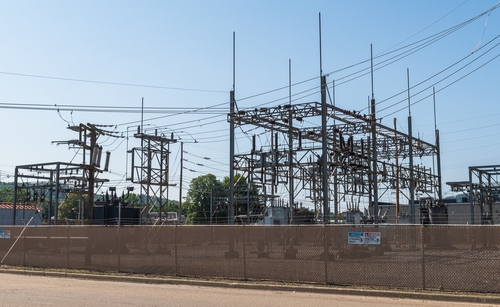
Republican legislators heard testimony that Pennsylvania’s energy policies are harmful to the state during a hearing on Monday.
State Reps. Martin Causer (R-Bradford), chairman of the House Energy Committee, and David Rowe (R-Middleburg), chairman of the House Republican Policy Committee, joined other legislators in the “Stopping New Energy Taxes” hearing as witnesses testified about the negative impact of energy policies and how they drive investments outside of Pennsylvania.
“Energy and energy production is one of our biggest issues that we face here in the Commonwealth, but it’s also one of our biggest opportunities,” Causer said. “Pennsylvania is an energy powerhouse, and we can be even more of an energy powerhouse if government would stay out of the way and not stymie that opportunity. We need to work together to realize the full potential of this vital industry.”
Witnesses said the Regional Greenhouse Gas Initiative (RGGI) was preventing new businesses from coming into the state. David Taylor, president and CEO of the Pennsylvania Manufacturers’ Association, said the RGGI was also increasing the cost of utilities and creating an unreliable energy supply.
“According to our best estimates, the RGGI will tax Pennsylvania electricity generation by at least $800 million per year,” Taylor said in his testimony. “It’s no wonder we have had no meaningful base load capacity investment since Gov. Wolf unilaterally entered us into this multi-state compact in 2019…It renders Pennsylvania uninvestable, threatening our ability to keep our own lights on, let alone maintain our status as the largest electricity exporter in the nation.”
Taylor also said the RGGI would contribute to higher energy taxes which would contribute to the bankrupting of consumers and businesses due to increasing utility costs.
“PJM, the grid operator for Pennsylvania and 12 other states across the greater Mid-Atlantic and Midwest, is waving more red flags than a matador at a bull fight in warning policymakers about a looming shortfall while power demand is growing,” he said. “Forecasted retirements across PJM would constitute 21 percent of its current capacity. With too few new base load capacity projects to replace those retirements, it’s a simple supply and demand issue. Over the last four years we’ve witnessed a rapid push via direct government intervention to electrify our lives… When you add in the competition to attract massive data centers, crypto mining operations, and artificial intelligence facilities that consume untold terawatts of power each year – it is a recipe for disaster.”
And Taylor questioned Gov. Josh Shapiro’s PACER and PRESS plans to address the issue. PACER, or the Pennsylvania Climate Emissions Reduction Act, would establish a Pennsylvania-specific cap-and-invest program that allows the state to determine its own cap on carbon and invest directly in lowering consumers’ electricity bills, the governor says. Meanwhile, PRESS, the Pennsylvania Reliable Energy Sustainability Standard, would attract federal investments to keep utility costs low by building out reliable, power sources, according to Shapiro.
However, “PACER is simply a state version of the same carbon tax scheme as RGGI,” Taylor said. “The PRESS plan would dramatically expand the current alternative energy portfolio standard to 50 percent of all electricity, ending Pennsylvania’s very successful competitive marketplace. The increase from the current 10 percent from tier one sources to 35 percent by 2035 is so radical, attempting to achieve it would be a threat to the public health and safety.”
Kenny Stein, vice president of policy at the Institute for Energy Research, said a switch to renewable energy sources may appear to save money, but cost money to implement.
“While wind and solar generation once built do not have ongoing fuel costs, and thus appear ‘cheap’ at the point of generation, they are not free or cheap for the grid as a whole,” he said in his testimony. “Upfront costs for materials are only the start: wind and solar require more spending on transmission, they require spending on some sort of backup capacity for when the wind is not blowing and the sun not shining, there are balancing costs to the grid to manage the sudden on and off nature of intermittent sources, and wind and solar have to be replaced in 20 years or less. This raises the overall cost of electricity as the percentage of generation from renewables, especially wind, increases.”
Rep. Rowe said the state’s history of energy production should drive policy in the future.
“Shapiro is positioning us for failure at a time when we’re already falling to the bottom. We must stop him from implementing new energy taxes and exporting Pennsylvania’s heritage industries to Ohio,” Rowe said.